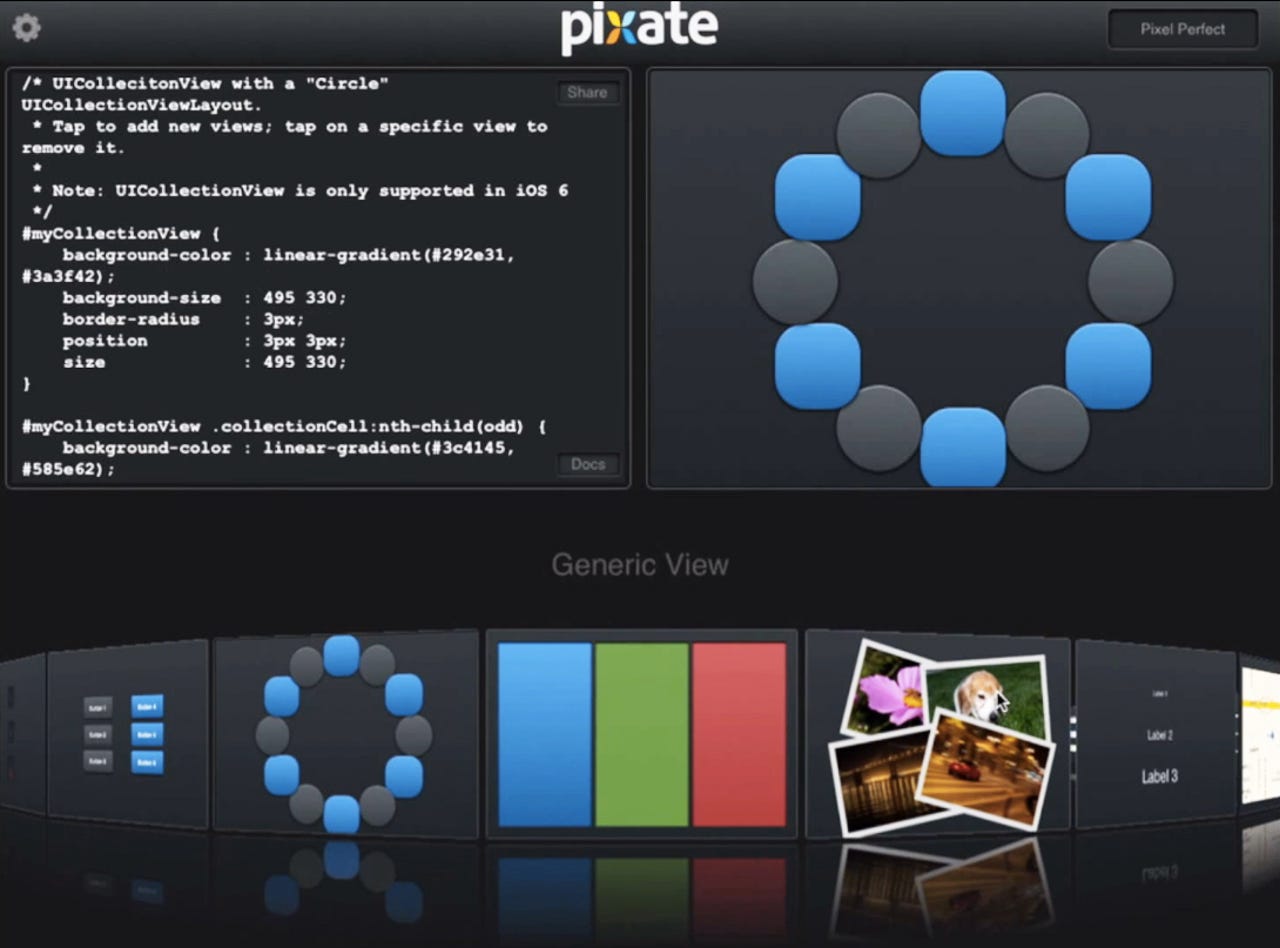Pixate raises $3.8 million for native mobile app UI


If you haven't heard of Pixate, the startup company now has 3.8 million more reasons for you to seek it out.
The Y Combinator-backed company based in Palo Alto, Calif. announced $3.8 million in funding this morning, mostly from nearby venture capital firm Accel Partners.
(If you're unfamiliar with Accel, just know that it invested in AdMob, Agile Software, Brightcove, Cloudera, Dropbox, Fusion-IO, IronPlanet, JBoss,Polycom/PictureTel, Real Networks, Squarespace and Webroot. No big deal.)
Pixate's mission is to create "dynamic user interfaces" for native mobile applications. Its namesake Engine for iOS is a free tool that promises to reduce the amount of code necessary to build a user interface. The package has native CSS and graphics engines wrapped into it, allowing developers to make front-end styling changes without having to resubmit the app to Apple's App Store.
The idea is to bring the rapid iteration of the web to the native application format, and reduce the number of hours spent in Adobe Photoshop and Xcode.
"Rather than having an app be a 'black box', Pixate enables the decoupling of styling and design from the application's core logic," co-founder and chief executive Paul Colton said in a statement. "Being able to dynamically change UI elements based on demographic or geographic rules is just the tip of the iceberg."
The six-month-old company says it has "hundreds of paying customers," and plans to use the additional funds to hire aggressively and expand support to Google's Android mobile operating system, allowing the young company to serve a majority of the mobile market. As a carrot to developers, the company also introduced Pixate Labs, a program that allows early access to future products.
Perhaps the most interesting aspect of this company? Continued interest in the native application path for mobile operating systems. Recent advancements in adaptive and responsive web development have threatened the user experience supremacy of the mobile app; this deal shows that the alternative isn't going down without a fight.